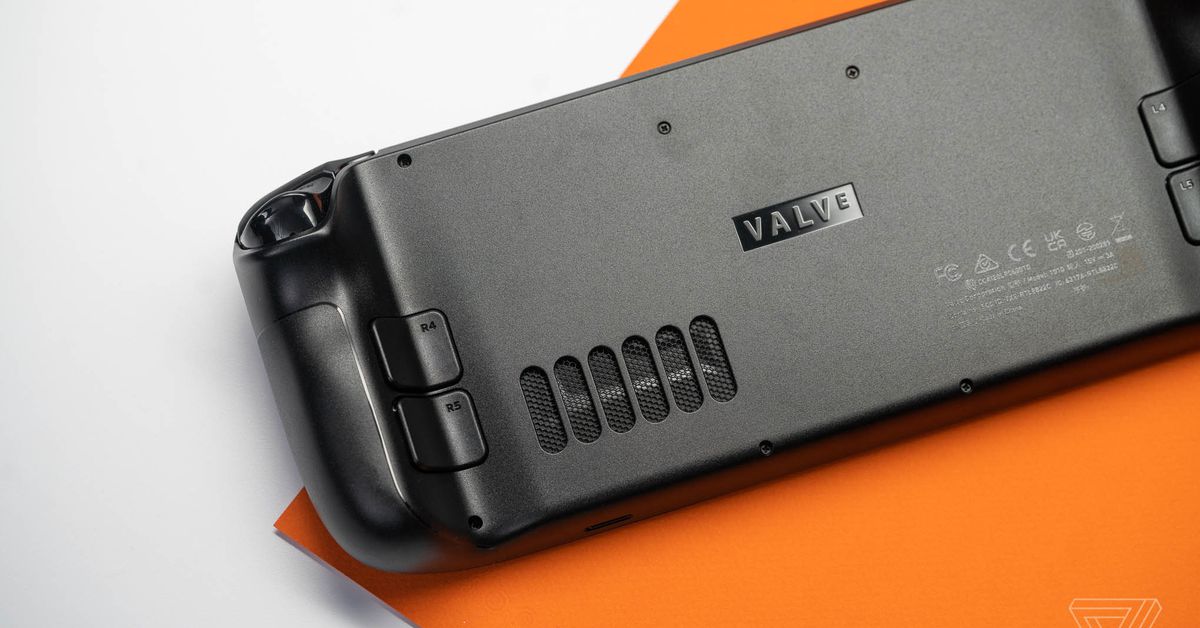A few more points from the (referenced) CNBC video: https://twitter.com/StreetSignsCNBC/status/1704971310361629080
- Would like work with other hardware manufacturers to adopt SteamOS
- Happy to see other manufacturers participating, making different decisions
- Right now no Steam Deck VR headset, but explore more in the future
- Keep working on the current SteamOS, version 3.5, hardware side focusing on the supply chain
- Current iteration is a stable performance target, sweet spot for the new releases
This just makes me expect it more.
Honestly, I think that’s a good thing, the current one is plenty of powerful for what it is. Specially considering it’s a portable device where power consumption and thermals are key.
If anything, it’s the games the ones that should try and adapt to more humble hardware. These days it makes no sense to increase so much the requirements for such marginal graphical difference.A new Steam Controller on the other hand, to match the deck controls, is something that is missing.
This is the best summary I could come up with:
Now, Valve’s Pierre-Loup Griffais tells The Verge and CNBC that it could be late 2025 or beyond before it raises that bar — because it wants to see a leap in performance without a significant hit to battery life.
Griffais credits “a targeted optimization effort in the Mesa radv Vulkan driver by our graphics driver team” to support unusual features like ExecuteIndirect, explaining that Valve learned how to optimize a similar GPU-driven rendering pipeline when it added support for Halo Infinite.)
All that said, Valve might totally still have a Steam Deck refresh in the works that doesn’t change the performance floor.
Screen and battery are the top pain points both Griffais and fellow designer Lawrence Yang want to address in a Steam Deck sequel, too, they told me in late 2022.
Or perhaps it just waits, and Valve’s mystery Galileo / Sephiroth turns out to be the long-awaited SteamVR standalone headset.
There’s also a theory that maybe Galileo is a Steam living room PC that can beam graphics to a headset, but Griffais threw some cold water on that idea last week.
The original article contains 501 words, the summary contains 183 words. Saved 63%. I’m a bot and I’m open source!
Wonder if Valve has something going with Lenovo to make a version of Steam OS for the Legion Go. Easily the coolest looking steam deck competitor right now, but the one windows is kinda brutal
Valve is in a pure win-win situation. The popularity of the Deck has led to an explosion in PC handhelds. Even if they take it easy, they have shown there is a market for people wanting to play their pc games on the go (or just in this form factor). Even if they’re not exactly buying the SD, Steam is still the choice storefront for devices like the Ally , Go, and the 50,000 smaller companies (Ayaneo, GPD etc.). I initially bought my Ally for GamePass and found myself buying more games on Steam .
If the Switch is still considered having life left, then the Steam Deck is good for a looong time
Love the strategy. Spend the next few years building up steam os and supporting Linux gaming. While developers have steam deck as a standard to spec to. When it’s time the steam deck 2 will be ready both in software and hardware.
But we already have a “faster” Steam Deck, it’s just coming to existing owners free as they continue to optimize and improve things from a software perspective rather than as new hardware.
SteamOS 3.5 still has some kinks to work out, but it’s also supposed to bring some nice performance improvements
Maybe it is because I’ve used low end computers for most of my life but the Steam Deck definitely feels like it has several years of life left in it. I’m mostly filling mine up with PC and console games from the last 30 years but even Baldur’s Gate 3 works fine on it. There’s a huge library of games for the system, especially when you include emulators.
I’d much rather Valve continue working on Proton to get more Windows games running on the Deck and improving overall performance of the OS.




